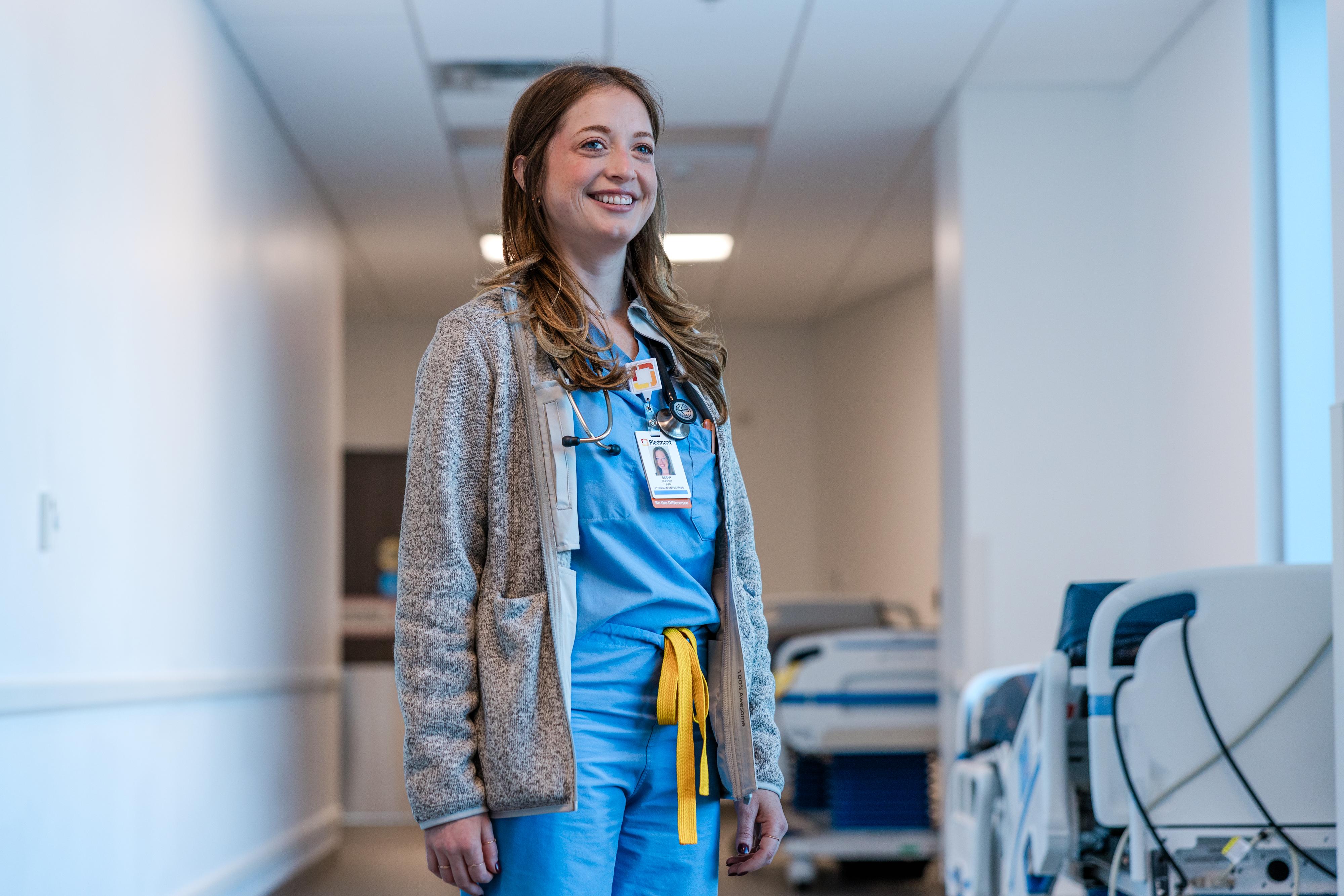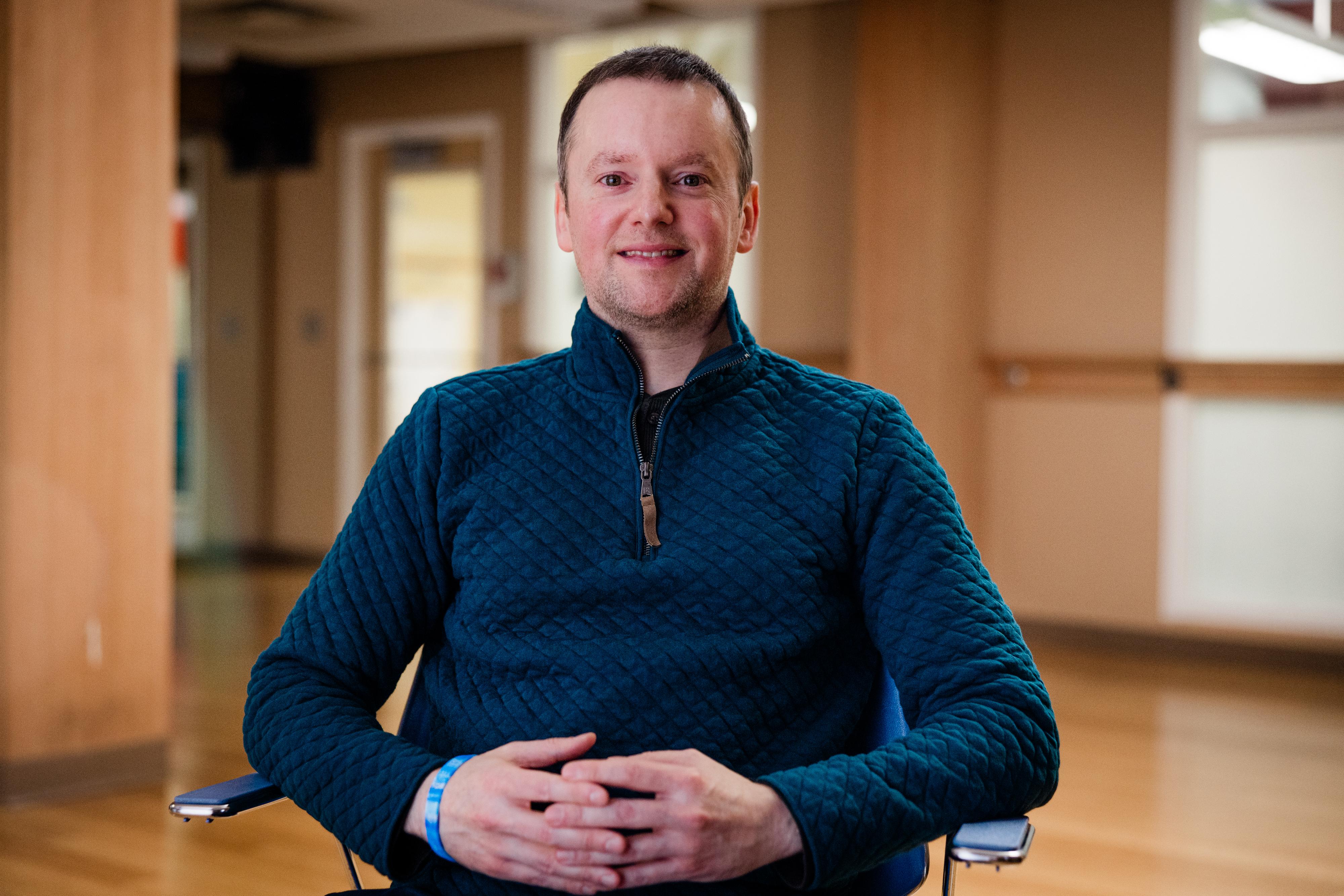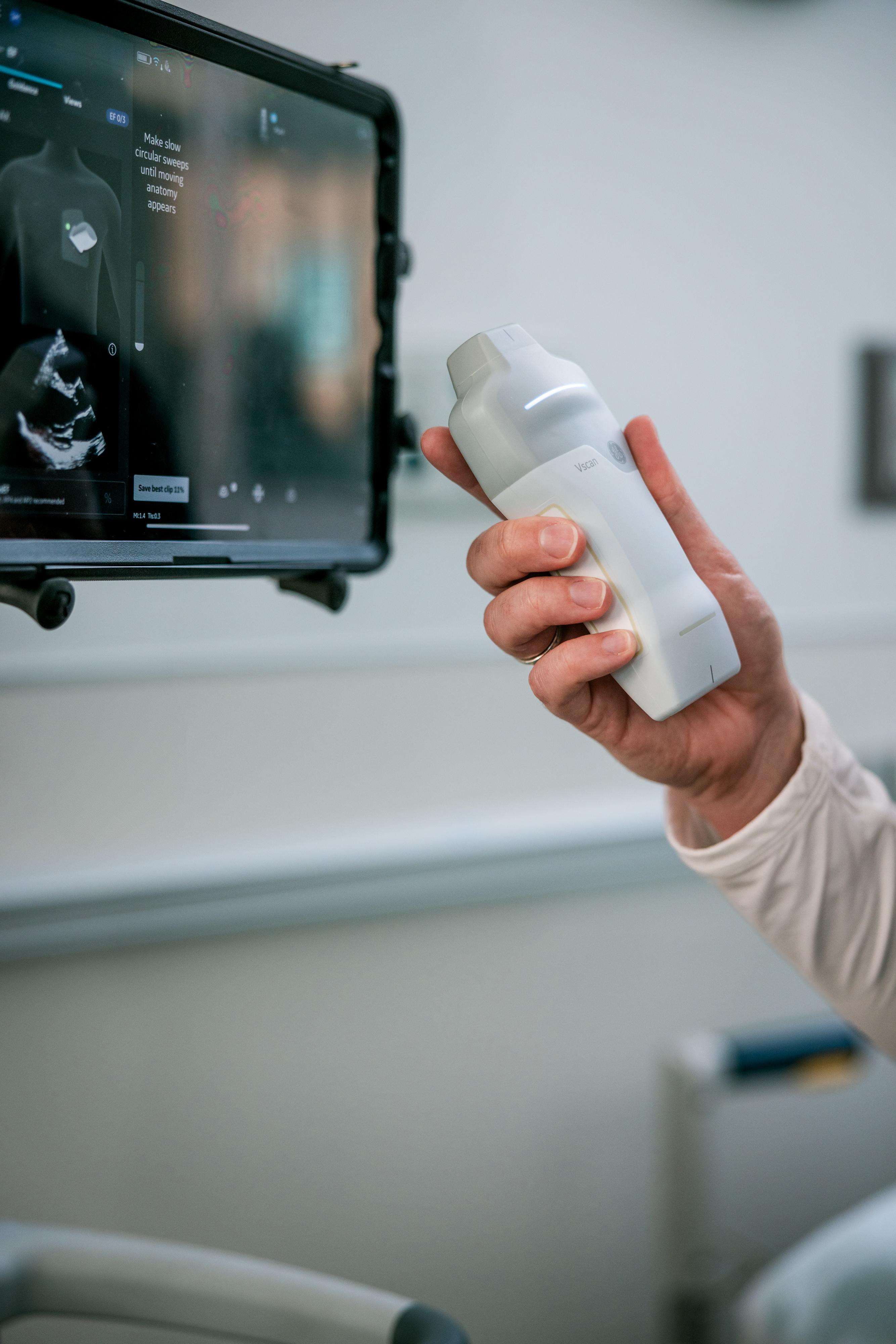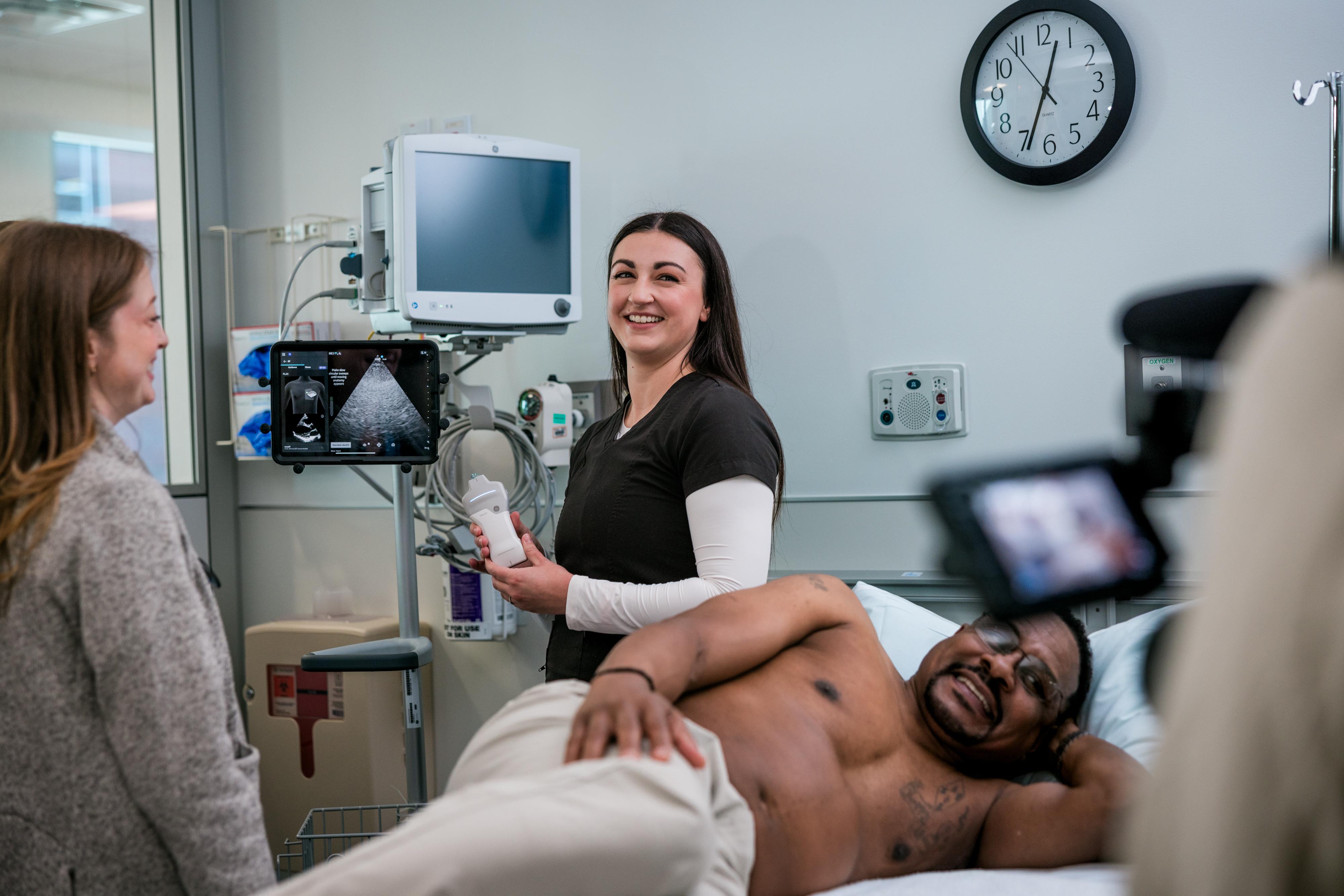Growing up with a twin sister who needed multiple cardiac surgeries as a child, Sarah Dunphy learned early how caring and compassionate nurses could make a huge difference in a patient’s life.
That understanding always made it hard for Dunphy, a certified nurse practitioner at Piedmont Atlanta Hospital, in Georgia, to wait for the results of a cardiac ultrasound, potentially also delaying the essential insights needed to move care forward. Now, a portable, flexible, wireless handheld ultrasound system allows nurses like Dunphy and other cardiac care team clinicians to expedite cardiac ultrasound at the point of care. At the same time, it’s creating opportunities for frontline care providers, like nurses, to further improve patient care.
Sarah Dunphy
Cardiovascular diseases (CVDs) are the leading cause of death globally. In the United States, CVDs kill one person every 33 seconds.[1],[2] Early diagnosis and treatment are key factors in ensuring better patient health.1 The most common way to diagnose CVDs is through a cardiac ultrasound, called an echocardiogram, a diagnostic tool that creates images of the heart’s valves and chambers.[3] But a global shortage of trained sonographers and an increased demand for imaging have resulted in critical delays in testing and treatment.[4],[5]
The healthcare industry has been searching for ways to reduce strain on the health system — and echocardiology labs — while also increasing access to quality care for patients, no matter where they live. The solution may be placing a pocket-size tool with artificial intelligence (AI)-guided technology into the hands of those on the front line — nurses — allowing them to acquire ultrasound images without waiting. That’s where Nicolas Poilvert, PhD, comes in.
Nicolas Poilvert
Poilvert was diagnosed with a heart condition in 2014 after his wife, then a medical student, suspected he had a heart murmur. After undergoing a series of tests, Poilvert, a machine learning architect at GE HealthCare, wanted to find a way to help quickly and easily diagnose others with CVD. He eventually spearheaded the creation of a deep learning algorithm designed to mimic the intuition of experienced clinicians, so that less experienced clinicians could obtain an automatic left ventricular ejection fraction (EF) estimate. The EF gives an indication of how well the person’s heart is pumping.3 This, coupled with AI that provides step-by-step scan guidance, enables more clinicians to easily and confidently capture diagnostic-quality cardiac images and an EF estimate. This software Poilvert helped develop, Caption AI, has been integrated into the GE HealthCare Vscan Air™ SL and brings AI capabilities to an ultra-portable and wireless ultrasound device for even more opportunities to expand access to care.
GE HealthCare’s Vscan Air SL
“We fairly quickly realized that the main reason for this tool to exist is to be in the hands of nurses,” he says.
Amplifying nurses’ impact
Nurses are the healthcare professionals at the forefront of patient care. They play a vital role in healthcare and often are the first to see important changes in a patient’s condition. Equipping nurses with new tools to gain immediate insights into a patient’s condition could open new possibilities in bedside care. For example, training nurses to use ultrasound technology could improve tasks they are already doing today, like bladder volume measurements and guided vascular access to improve first attempts on difficult peripheral intravenous placements.[6] Ultrasound also has potential to enable nurses like Sarah Dunphy to acquire cardiac images. These uses of ultrasound could provide nurses and care teams with invaluable information for earlier detection and more informed clinical decision-making.
Vscan Air SL with Caption AI is designed to expand the number of healthcare professionals that can successfully acquire cardiac images, so that even non-expert ultrasound users can get the images they need. The opportunity to catch symptomatic and asymptomatic disease was demonstrated in an analysis of 1,800 AI-guided echocardiograms on patients with cardiovascular risk factors. Findings showed that more than 50% had cardiac abnormalities consistent with at least Stage B heart failure, which refers to individuals without current or previous symptoms of heart failure but with structural heart disease, increased filling pressures in the heart or other risk factors.[7]
The Vscan Air portfolio, which includes the Vscan Air SL and Vscan Air CL, has applications across care areas, from vascular to musculoskeletal, pulmonary, ophthalmic, pediatric and obstetric and gynecologic. And now, with the AI-powered Vscan Air SL, nurses can confidently acquire cardiac images on patients at the point of care to help accelerate care decisions and help patients receive treatment sooner — leading to better outcomes.
The tool itself is notable for its portability and power. While only about the size of a smartphone, the Vscan Air brings the power of ultrasound to the point-of-care. It already is bringing care to far-flung locations, such as remote islands in Greece and Japan, and to underserved populations in the United Kingdom and the United States. In Ghana, the device is helping midwives and nurses save lives by detecting cardiac abnormalities in pregnant women through an innovative initiative spearheaded by the Ghanaian-Diaspora Nursing Alliance.
Transforming nursing care
Technological innovations in the healthcare industry bring opportunities to further enhance the role of nurses in a patient’s journey. Healthcare solutions providers are actively listening to feedback from nurses to improve the medical equipment they use, aiming to adapt it to their daily practice and maximize its potential. The collaboration between GE HealthCare and the University of South Carolina exemplifies this effort. This technology is not only training nurses in the use of ultrasound equipment but also gathering feedback to better adapt and improve these machines to suit their practice, challenges, and environment.
Today’s significant healthcare challenges require versatile equipment to enhance both user and patient experiences and improve patient outcomes. Innovations like Vscan Air offer the possibility to expand and enhance practices, allowing the use of one system for anytime, anywhere* ultrasound.
Handheld ultrasound technology enhanced with AI is becoming a transformative tool — particularly in the hands of nurses. It is helping to improve their current tasks while also helping care teams reinvent how care is delivered. For patients, it can help improve their overall experience, reducing wait times, travel burden and costs. It also holds the potential to democratize access to care globally and potentially even alleviate technician shortages and overburdened echocardiology departments. But for Dunphy, the real benefit of the technology is that it is allowing her to provide better care and healthier outcomes for her patients.
“I want to be able to do what I can to help patients feel safe, cared for and heard,” Dunphy says. “Having more information allows me to communicate that with them quicker and let patients know that we’re here to help them. That’s what drives me.”
Watch Sarah Dunphy’s full story here or below.
*The device has been verified for limited use outside of professional healthcare facilities. Use is restricted to environmental properties described in the user manual. Please contact your GE HealthCare sales representative for detailed information.
[1] World Health Organization. Cardiovascular diseases (CVDs). June 11, 2021. https://www.who.int/news-room/fact-sheets/detail/cardiovascular-diseases-(cvds). Accessed April 2025.
[2] Centers for Disease Control and Prevention. “Heart Disease Facts.” October 24, 2024. https://www.cdc.gov/heart-disease/data-research/facts-stats/index.html. Accessed April 2025.
[3] Mayo Clinic. “Echocardiogram.” 2025. https://www.mayoclinic.org/tests-procedures/echocardiogram/about/pac-20393856. Accessed April 2025.
[4] “Radiology Facing a Global Shortage.” RSNA News. Last modified May 10, 2022. https://www.rsna.org/news/2022/may/global-radiologist-shortage.
[5] Maskell, G. (2022). “Why does demand for medical imaging keep rising?” British Medical Journal 379, o2614. https://doi.org/10.1136/bmj.o2614.
[6] Burton SO, Donovan JK, Jones SL, Meadley BN. “Can Non-Physician Providers Use Ultrasound to Aid in Establishing Peripheral IV Access in Patients Who are Difficult to Cannulate? A Scoping Review.” Prehospital and Disaster Medicine. August 2022; 37(4): 535-546. doi: 10.1017/S1049023X22000796. Epub 2022, May 20. PMID: 35593145; PMCID: PMC9280064.
[7] American Heart Association. “Classes of heart failure.” https://www.heart.org/en/health-topics/heart-failure/what-is-heart-failure/classes-of-heart-failure. Accessed April 2025.





